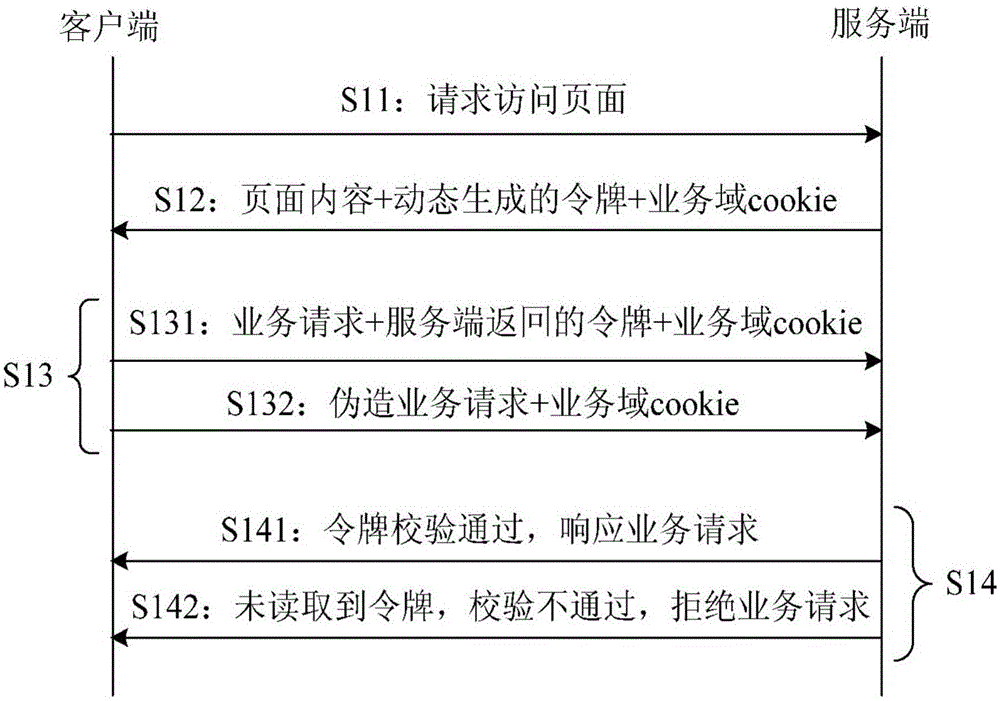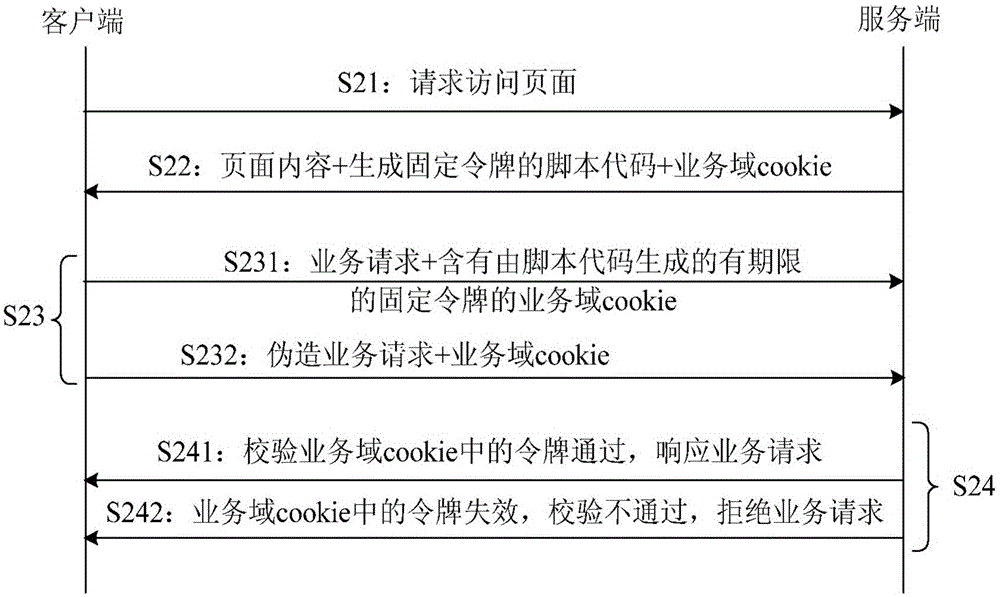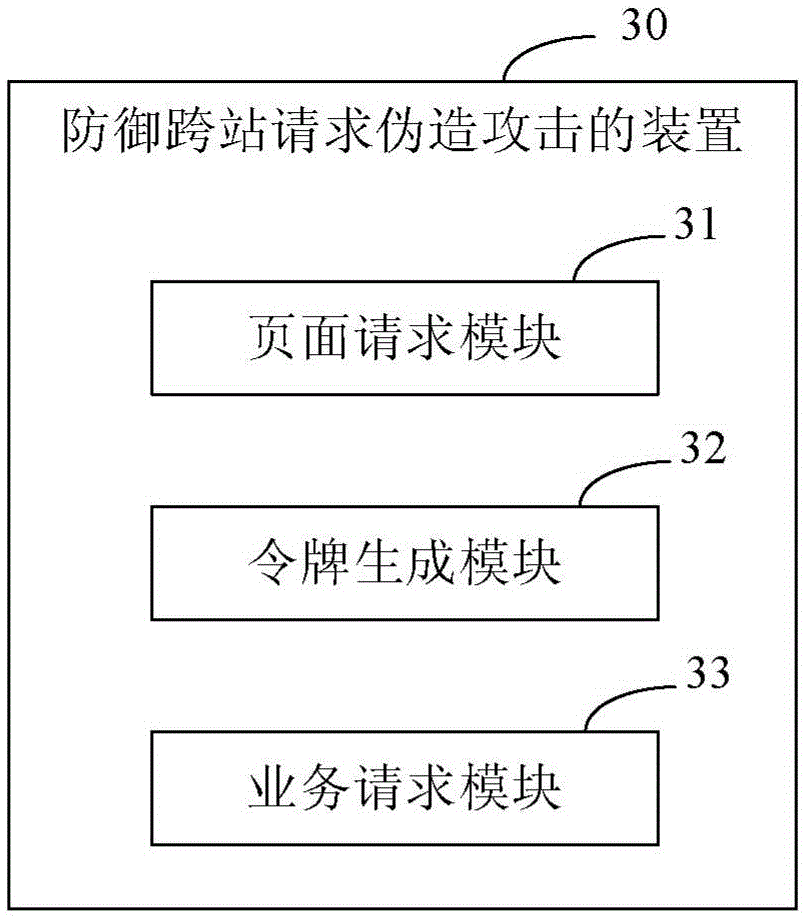Method and device for defending cross-site request forgery attack
A cross-site request forgery and business request technology, applied in the field of computer networks, can solve problems such as complex implementation, high server pressure, and large code changes, and achieve the effect of simple implementation, reduced pressure, and defense against cross-site request forgery attacks
- Summary
- Abstract
- Description
- Claims
- Application Information
AI Technical Summary
Problems solved by technology
Method used
Image
Examples
Embodiment Construction
[0031] Exemplary embodiments of the present invention are described below in conjunction with the accompanying drawings, which include various details of the embodiments of the present invention to facilitate understanding, and they should be regarded as exemplary only. Accordingly, those of ordinary skill in the art will recognize that various changes and modifications of the embodiments described herein can be made without departing from the scope and spirit of the invention. Also, descriptions of well-known functions and constructions are omitted in the following description for clarity and conciseness.
[0032] figure 2 It is a business flow chart of a method for defending against cross-site request forgery attacks according to an embodiment of the present invention. Such as figure 2 As shown, a method for defending against cross-site request forgery attacks in the present invention mainly includes the following steps S21 to S24.
[0033] Step S21: the client requests...
PUM
 Login to View More
Login to View More Abstract
Description
Claims
Application Information
 Login to View More
Login to View More - Generate Ideas
- Intellectual Property
- Life Sciences
- Materials
- Tech Scout
- Unparalleled Data Quality
- Higher Quality Content
- 60% Fewer Hallucinations
Browse by: Latest US Patents, China's latest patents, Technical Efficacy Thesaurus, Application Domain, Technology Topic, Popular Technical Reports.
© 2025 PatSnap. All rights reserved.Legal|Privacy policy|Modern Slavery Act Transparency Statement|Sitemap|About US| Contact US: help@patsnap.com



